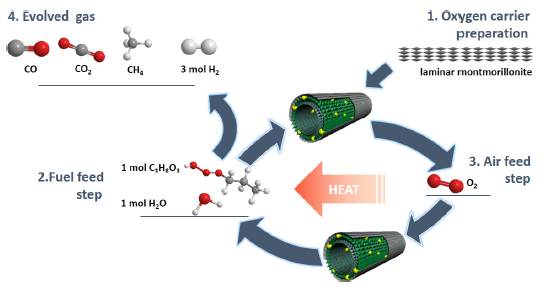This paper describes the synthesis of a series of Ni based Al-MCM-41 oxygen carriers with and without Ce promoter and their application in chemical looping steam reforming of glycerol. The Al-MCM-41 is derived from montmorillonite. The oxygen carriers were prepared by direct-synthesis and post-synthesis method. A variety of technologies including N2 adsorption-desorption, X-ray diffraction (XRD), inductively coupled plasma optical emission spectroscopy (ICP-OES), H2 temperature-programmed reduction (H2-TPR), and transmission electron microscopy (TEM) were conducted to characterize the fresh and used oxygen carriers. The results show the direct-synthesis oxygen carrier possesses excellent textual properties, such as high Ni loading, small particle size, large pore volume, and uniform pore size. The incorporation of Ce could effectively control particle size via strong metal support interaction, promote the homogeneous distribution of Ni, and enhance oxygen mobility capability and water gas shift reaction. And thus shorten ‘dead time’ during the fuel feed step. The CeNi/Al-MCM-41 displayed the superior activity and excellent long-term stability, which could be due to the strengthened anti-sintering and coke capability.
Conclusions
Three nickel nanoparticles encapsulated inside Al-MCM-41, derived from montmorillonite, mesoporous OCs were successfully synthesized via different synthesis method, and for the first time used in CLR progress. It is clear that both ordered mesoporous structure and Ce promoter play important role in achieving excellent CLR performance. The OCs derived from directsynthesis method could improve Ni loading, dispersion and MSI, and the Ce modification could effectively control the size of nickel size, improve the reducibility of partial NiO species, and promote WGS reaction. The synergistic effect of above results lead to the high activity, good stability and short ‘dead time’.
The results have been published on FUEL 183 (2016) 170-176.
